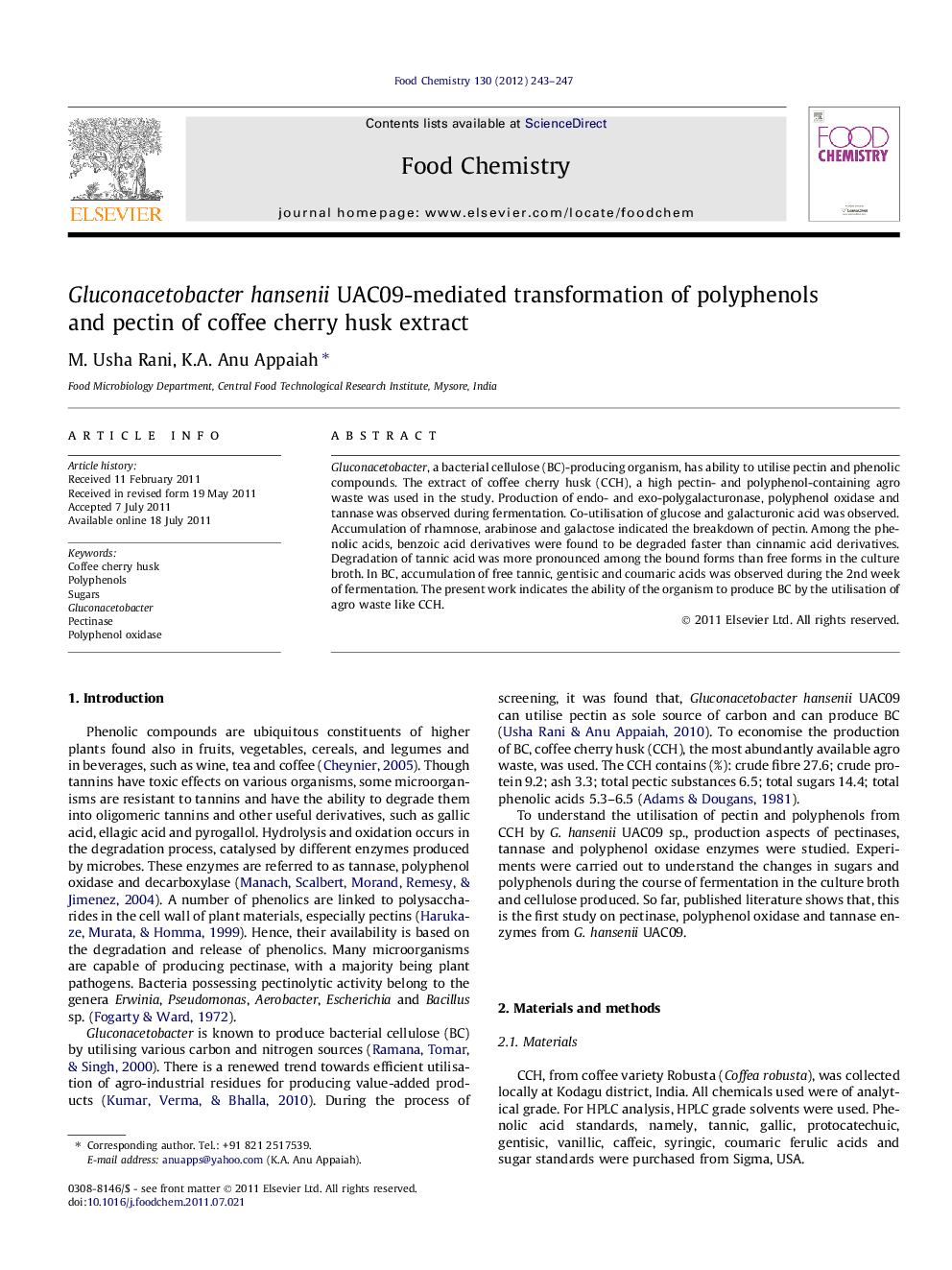| Article ID | Journal | Published Year | Pages | File Type |
|---|---|---|---|---|
| 1186043 | Food Chemistry | 2012 | 5 Pages |
Gluconacetobacter, a bacterial cellulose (BC)-producing organism, has ability to utilise pectin and phenolic compounds. The extract of coffee cherry husk (CCH), a high pectin- and polyphenol-containing agro waste was used in the study. Production of endo- and exo-polygalacturonase, polyphenol oxidase and tannase was observed during fermentation. Co-utilisation of glucose and galacturonic acid was observed. Accumulation of rhamnose, arabinose and galactose indicated the breakdown of pectin. Among the phenolic acids, benzoic acid derivatives were found to be degraded faster than cinnamic acid derivatives. Degradation of tannic acid was more pronounced among the bound forms than free forms in the culture broth. In BC, accumulation of free tannic, gentisic and coumaric acids was observed during the 2nd week of fermentation. The present work indicates the ability of the organism to produce BC by the utilisation of agro waste like CCH.
► Production of bacterial cellulose in coffee cherry husk extract. ► Synthesis of pectinase, degradation of pectins and the accumulation of its monomers. ► Co-utilisation of glucose and galacturonic acid was observed. ► Biotransformation of phenolics during the growth of Gluconacetobacter hansenii. ► Synthesis of polyphenol oxidase and tannase enzymes by Gluconacetobacterhansenii.
